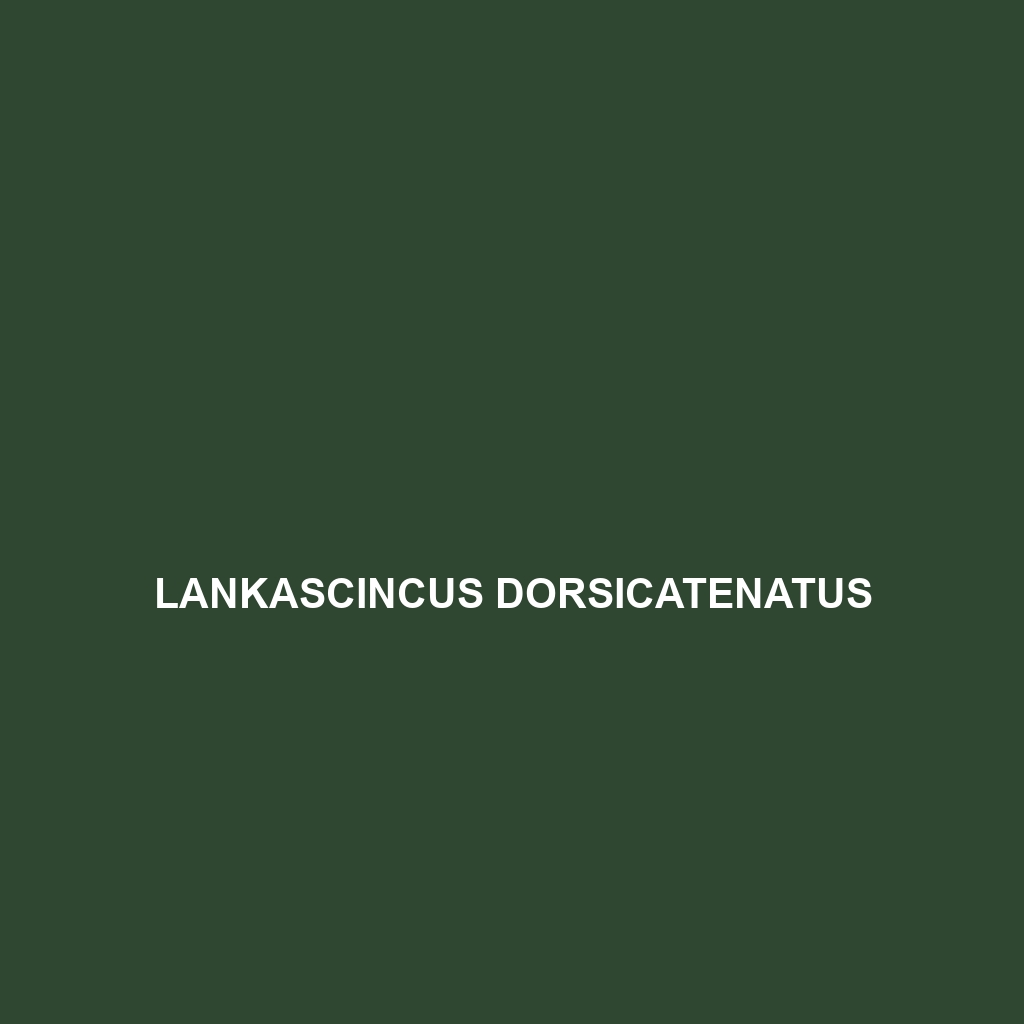Common Name
Lankascincus deignani
Scientific Name
Lankascincus deignani
Habitat
Lankascincus deignani, commonly known as Deignans’ skink, is primarily found within the lush, tropical rainforests of Sri Lanka. This species thrives in humid and warm environments typically characterized by rich biodiversity. The skink showcases a preference for dappled sunlight, which can be found in the understory of the forests where dense ground cover protects it from predation. Geographic regions suitable for the Lankascincus deignani include areas with significant foliage, such as rainforests and moist montane forests, often at elevations ranging from 200 to 1,000 meters. The climate in these regions is generally tropical, with high humidity and substantial rainfall throughout the year, creating ideal conditions for this reptile’s survival.
Physical Characteristics
The Lankascincus deignani is a small to medium-sized skink, measuring approximately 10 to 15 cm in length. This species is recognized for its slender body shape and elongated limbs, enabling agile movement through the forest floor. The coloration of the Lankascincus deignani varies significantly, with individuals often exhibiting a striking pattern of brown to dark green hues, which serve as effective camouflage against the forest leaf litter. These skinks possess smooth, shiny scales that reflect light, aiding in moisture retention. A distinctive feature of this species is its well-developed, robust limbs, which allow for climbing and burrowing. Its long tail, which may contribute to balance, can be regenerated if lost due to threats.
Behavior
Lankascincus deignani exhibits primarily diurnal behavior, being most active during the day when it engages in foraging and basking. Social interactions among individuals can be observed during the mating season, where males display more prominent colors and engage in territorial behaviors. The species does not migrate; instead, they utilize their excellent camouflage to remain undetected among the forest litter. Interestingly, these skinks utilize an array of vocalizations and body language in social contexts, particularly during mating rituals, where males often perform visual displays to attract females.
Diet
The diet of Lankascincus deignani primarily consists of small invertebrates, classifying it as an insectivore. Common food sources include ants, beetles, and other small insects found within their forest habitat. Lankascincus deignani relies on its keen eyesight and quick reflexes to catch prey, often foraging under leaf litter and in shallow burrows. In addition to insects, it may occasionally consume small fruit or plant material, showcasing a slight omnivorous tendency that aids in its nutrient intake during lean foraging periods.
Reproduction
The reproductive cycle of Lankascincus deignani occurs seasonally, with mating typically taking place during the wet season, which aids in increasing survival rates for offspring. After courtship displays, females lay 2 to 6 eggs in a sheltered environment, such as under leaves or in moist soil. The incubation period lasts about 60 to 90 days, depending on environmental conditions. Hatchlings are independent at birth and employ camouflage to evade predators. Parental investment is minimal; however, females may exhibit site fidelity, returning to previous nesting sites, which may help protect their young.
Conservation Status
Currently, Lankascincus deignani is classified as a species of Least Concern according to the IUCN Red List. While populations are stable, this skink faces threats from habitat degradation due to deforestation, agricultural expansion, and urbanization. Conservation efforts are ongoing to protect the biodiversity of its natural habitat in Sri Lanka, with emphasis on sustainable land-use practices. Challenges remain as human encroachment continues to affect the delicate ecosystems where these skinks thrive.
Interesting Facts
One fascinating aspect of Lankascincus deignani is its ability to change color slightly with variations in temperature and mood. This color adaptation not only aids in temperature regulation but also plays a role during social interactions. Additionally, these skinks have been observed utilizing their agile movements to evade predators by darting into crevices or burrowing into the ground. Another intriguing fact is their symbiotic relationship with certain insects found in their habitat, which may help control pest populations, showcasing their ecological importance.
Role in Ecosystem
Lankascincus deignani plays a crucial role in its ecosystem as both a predator and prey. By consuming various insects, these skinks help regulate insect populations, thus contributing to a balanced ecosystem. They serve as prey for larger predators, including birds and mammals, highlighting their position in the food web. The presence of these skinks is indicative of a healthy forest ecosystem, as they require specific environmental conditions to thrive, acting as bioindicators for ecological studies. Their interactions within the habitat promote biodiversity and assist in maintaining ecological integrity.
